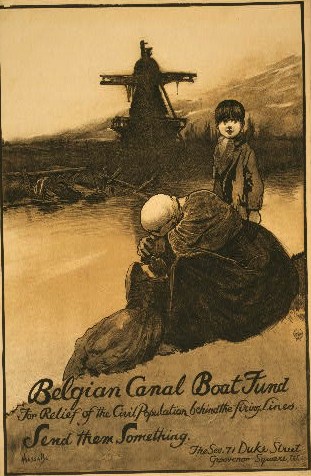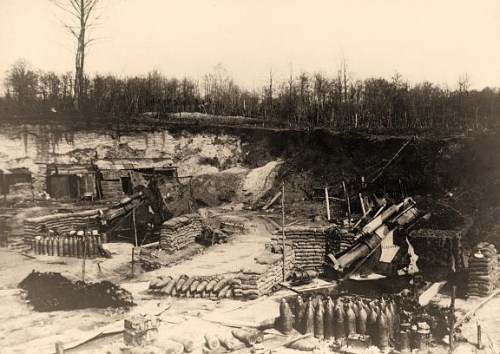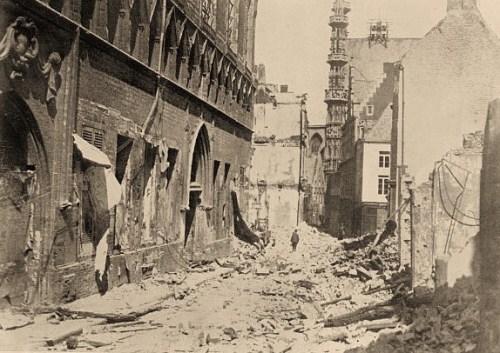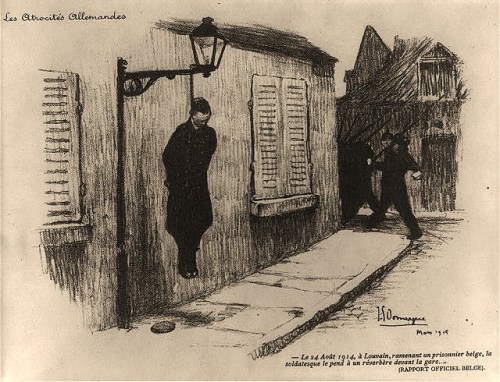
Belgian Canal Boat Fund for the relief of the civil population behind the firing lines. Send them something
The First World War was not the first example of civilian populations being decimated by what is now euphemistically called collateral damage or being intentionally slaughtered by opposing combatants as part of a larger strategy. The ancient and medieval histories are full of captured cities being put to the sword and as the technology of warfare improved targeting skills did not. Look at the conquest of the new world, look at Goya’s paintings from Spain during the Napoleonic Wars and look at what Grant and Sherman accomplished during the War of Northern Aggression. What makes World War I – and subsequent military actions – different is that these actions were widely disseminated and used for propaganda purposes to mobilize populations in hatred of the enemy – often justifying more and greater slaughter in order to get even. Again George Orwell put it best, Every war when it comes, or before it comes, is represented not as a war but as an act of self-defense against a homicidal maniac… War against a foreign country only happens when the moneyed classes think they are going to profit from it.
On 26 August 1914 the world-famous university library in the Belgian town of Louvain was looted and destroyed by German troops. The international community reacted in horror and the behavior of the Germans at Louvain came to be seen as the beginning of a different style of war, without the rules that had governed military conflict up to that point – a more total war, in which enemy civilians and their entire culture were now legitimate targets.
Kramer asserts the destruction at Louvain was simply one symbolic moment in a vast wave of cultural destruction and mass killing that swept across the map of Europe at the time of the First World War. Using a wide range of examples and striking eye-witness accounts from England, France, Germany, and elsewhere, Kramer brings home the reality of the Great War, painting a picture of an entire continent plunging into a chilling new world of mass mobilization, total warfare, and the celebration of nationalist or ethnic violence – often directed expressly at the enemy’s civilian population.
Kramer examines the psychological impact of trench warfare, addresses the question of German atrocities (were the Germans particularly barbaric, or was savage behavior common on all sides?), and offers a disturbing summation of the war’s impact on European culture. From the Western Front to the Balkans, from Italy to the war in the East, the First World War was the most apocalyptic the world had ever known. This book tells you how and why the civilized nations of Europe descended into unprecedented orgy of destruction.






